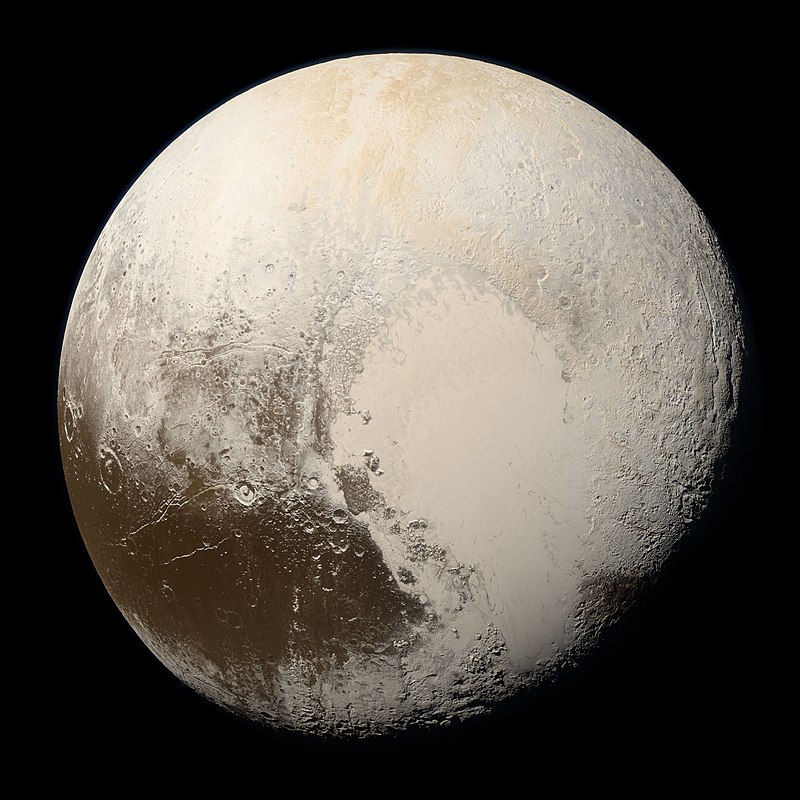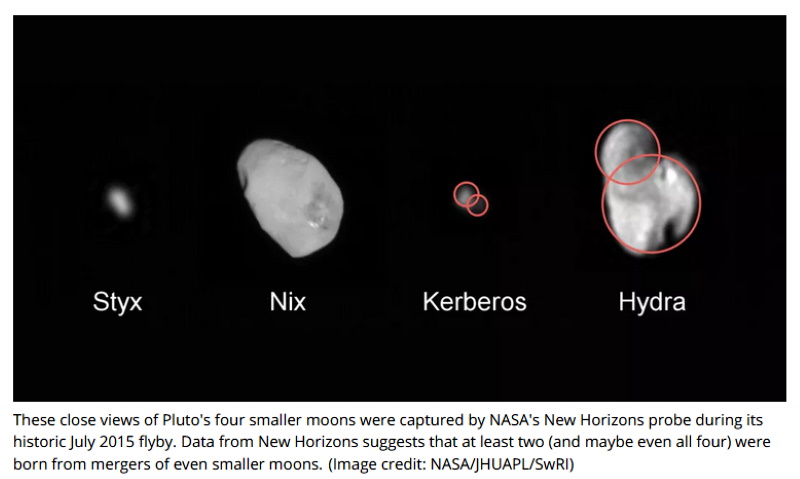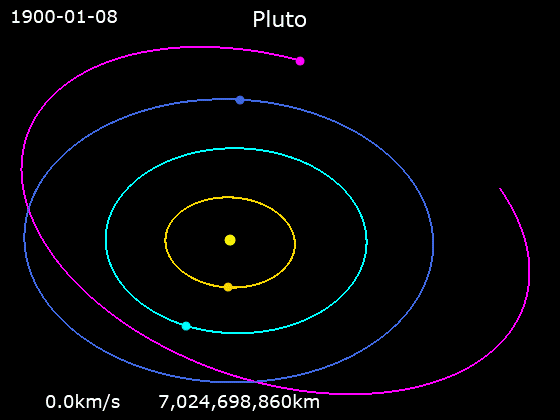Post by Admin on Apr 4, 2021 3:28:08 GMT -7
www.space.com/43-pluto-the-ninth-planet-that-was-a-dwarf.html?jwsource=cl
en.wikipedia.org/wiki/Pluto

ORBITS: en.wikipedia.org/wiki/Pluto#/media/File:Plutoorbit1.5sideview.gif
en.wikipedia.org/wiki/Pluto

ORBITS: en.wikipedia.org/wiki/Pluto#/media/File:Plutoorbit1.5sideview.gif
Pluto (minor planet designation: 134340 Pluto) is a dwarf planet in the Kuiper belt, a ring of bodies beyond the orbit of Neptune. It was the first and the largest Kuiper belt object to be discovered. After Pluto was discovered in 1930, it was declared to be the ninth planet from the Sun. Beginning in the 1990s, its status as a planet was questioned following the discovery of several objects of similar size in the Kuiper belt, including the dwarf planet Eris. This led the International Astronomical Union (IAU) in 2006 to formally define the term "planet" — excluding Pluto and reclassifying it as a dwarf planet.
Pluto is the ninth-largest and tenth-most-massive known object directly orbiting the Sun. It is the largest known trans-Neptunian object by volume but is less massive than Eris. Like other Kuiper belt objects, Pluto is primarily made of ice and rock and is relatively small—one-sixth the mass of the Moon and one-third its volume. It has a moderately eccentric and inclined orbit during which it ranges from 30 to 49 astronomical units or AU (4.4–7.4 billion km) from the Sun. This means that Pluto periodically comes closer to the Sun than Neptune, but a stable orbital resonance with Neptune prevents them from colliding. Light from the Sun takes 5.5 hours to reach Pluto at its average distance (39.5 AU).
Pluto has five known moons: Charon (the largest, with a diameter just over half that of Pluto), Styx, Nix, Kerberos, and Hydra. Pluto and Charon are sometimes considered a binary system because the barycenter of their orbits does not lie within either body.
The New Horizons spacecraft performed a flyby of Pluto on July 14, 2015, becoming the first and, to date, only spacecraft to do so. During its brief flyby, New Horizons made detailed measurements and observations of Pluto and its moons. In September 2016, astronomers announced that the reddish-brown cap of the north pole of Charon is composed of tholins, organic macromolecules that may be ingredients for the emergence of life, and produced from methane, nitrogen and other gases released from the atmosphere of Pluto and transferred 19,000 km (12,000 mi) to the orbiting moon.
Pluto is the ninth-largest and tenth-most-massive known object directly orbiting the Sun. It is the largest known trans-Neptunian object by volume but is less massive than Eris. Like other Kuiper belt objects, Pluto is primarily made of ice and rock and is relatively small—one-sixth the mass of the Moon and one-third its volume. It has a moderately eccentric and inclined orbit during which it ranges from 30 to 49 astronomical units or AU (4.4–7.4 billion km) from the Sun. This means that Pluto periodically comes closer to the Sun than Neptune, but a stable orbital resonance with Neptune prevents them from colliding. Light from the Sun takes 5.5 hours to reach Pluto at its average distance (39.5 AU).
Pluto has five known moons: Charon (the largest, with a diameter just over half that of Pluto), Styx, Nix, Kerberos, and Hydra. Pluto and Charon are sometimes considered a binary system because the barycenter of their orbits does not lie within either body.
The New Horizons spacecraft performed a flyby of Pluto on July 14, 2015, becoming the first and, to date, only spacecraft to do so. During its brief flyby, New Horizons made detailed measurements and observations of Pluto and its moons. In September 2016, astronomers announced that the reddish-brown cap of the north pole of Charon is composed of tholins, organic macromolecules that may be ingredients for the emergence of life, and produced from methane, nitrogen and other gases released from the atmosphere of Pluto and transferred 19,000 km (12,000 mi) to the orbiting moon.


